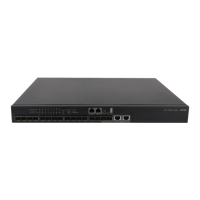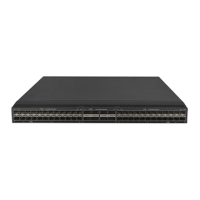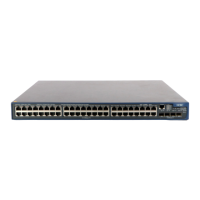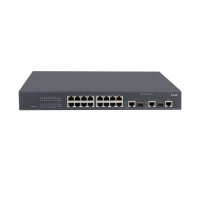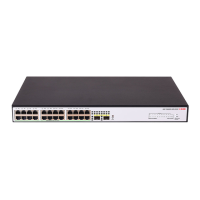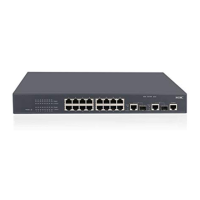33
2. Verify that the port configurations do not affect packet sending:
a. Use the display interface brief command to verify that the port configurations are
correct.
The port configurations include the duplex mode, speed, port type, and VLAN
configurations of the ports at both ends of the link.
b. If configuration errors exist, modify the port configurations. If the number of outgoing
packets in the output from the display interface command is accumulating, you can
determine that the port can send packets.
c. If the port fails to send packets, use the shutdown command and then the undo shutdown
command to re-enable the port. If the number of outgoing packets in the output from the
display interface command is accumulating, you can determine that the port can send
packets.
d. If the port is configured with STP, use the display stp brief command to verify that the
port is not in the discarding state.
e. If a port is set to the discarding state by STP, examine and modify the STP-related
configurations to resolve the issue.
As a best practice, configure the port as an edge port or disable STP on the port if it is
directly connected to a terminal.
f. If the port is assigned to an aggregation group, use the display link-aggregation
summary command to verify that the status of the port is Selected.
g. If the status of the port is Unselected, the port cannot send or receive data packets.
h. Determine the reasons why the port becomes Unselected, for example, the attribute
configurations of the port are different from the reference port. Modify the attribute
configurations of the port to make the port become Selected.
3. Verify that the port and the link medium are correct:
a. Plug the link medium into another port that is operating correctly, and determine whether the
same issue occurs.
b. If the issue still occurs, verify that the following items are operating correctly:
− Intermediate links and devices, including optical-to-electrical converters, cable terminal
racks, and transmission devices.
− Transmission medium, including network cables, optical fibers, and transceiver
modules.
c. Examine the port.
− If the port is a copper port, directly connect the port to a PC.
− If the port is a fiber port, replace the transceiver module plugged into the port.
4. If you determine that the configurations, the peer port, and the link are correct but the issue
persists, perform the following tasks:
a. Use the display diagnostic-information command to collect the diagnostic
information.
b. Contact H3C Support.
<Sysname> display diagnostic-information
Save or display diagnostic information (Y=save, N=display)? [Y/N]:Y
Related commands
This section lists the commands that you might use for troubleshooting ports.
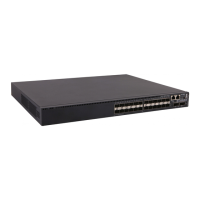
